When we moved and no longer had a waterfront of our own, we became trailer-sailors again and needed to make it easier to transport our various boats to the launch ramp. One challenge was our 17′ Grumman Double-Ender canoe. Trailering it seemed overkill, and cartopping would be the way to go if only the 70-lb canoe didn’t require pressing a crew of two or three to load or unload it. We purchased and installed the Reese Towpower Hitch Mount Canoe Loader, and now I load and unload the canoe by myself while Skipper supervises from a comfortable chair in the shade.
The loader weighs 18 lbs and consists of a lower receiver tube, adjustment tube, upright tube, a 21″ cross support with rubber strip, a shock cord, and a hardware packet that includes a hitch pin, hex bolt with locknut, and a 3/4″-diameter square-head bolt to attach the lower receiver tube to a hitch drawbar. The hitch drawbar must be purchased separately to fit the vehicle’s receiver. The cross-support can be adjusted from 36″ to 60″ above the center of the receiver. This height should be sufficient for most vehicles except for very tall vehicles with high roof racks.
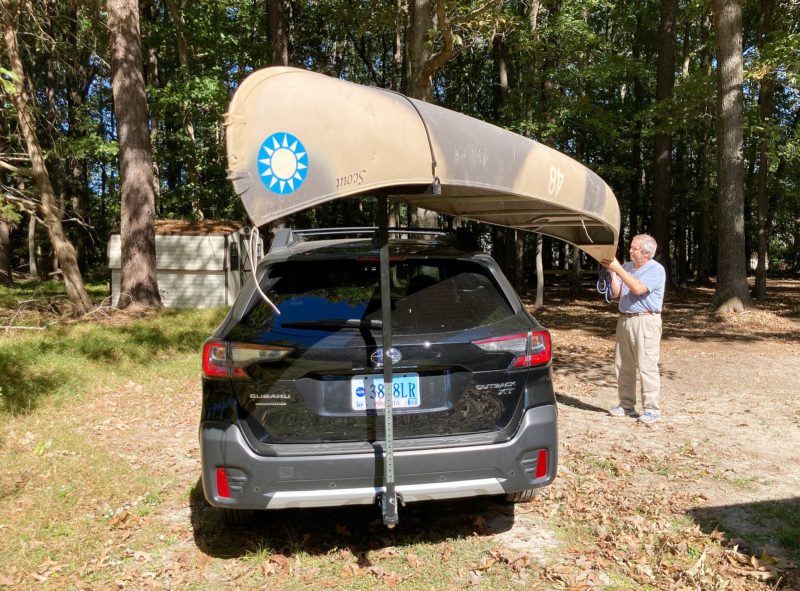 Photographs by the authors
Photographs by the authorsWith the loader taking a bit more than half the weight of this aluminum canoe, loading and unloading it is a lot easier.
To load the canoe, I move the canoe stern to the rear of the car, with the bow pointing off to one side. I roll the canoe upside down, lift the stern onto the swiveling cross support, which has a rated capacity of 100 lbs, and secure the canoe with the shock cord. I then move to the bow, lift it high enough for the canoe to clear the roof rack, and walk it to the front of the vehicle. The canoe is then secured to the roof rack, and while the canoe loader can stay attached to the hitch receiver and canoe during transport, it is not intended to be used as the rear tie-down.
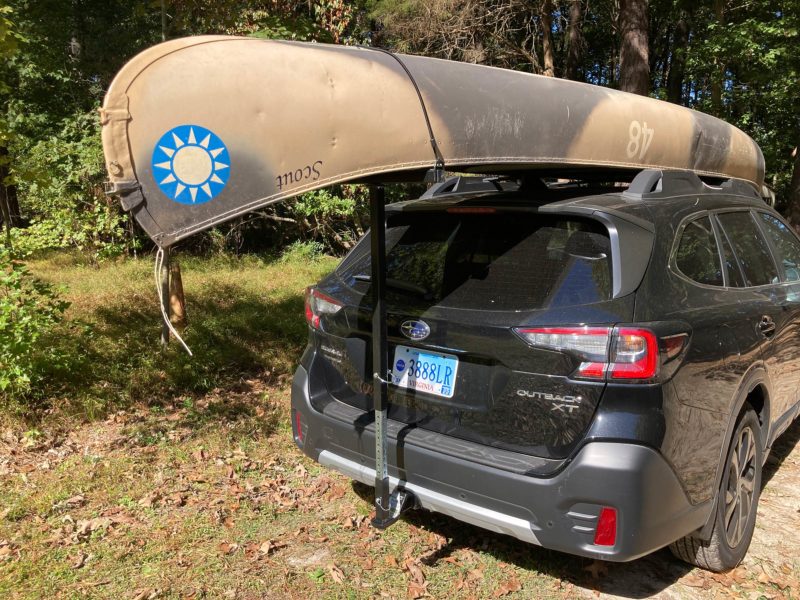
While the loader comes with a bungee with hooks to engage the loops in the cross bar, the boat must be secured to both roof racks to stabilize it.
Once the loader is installed, hatchbacks cannot be opened until the canoe and loader are removed. On a newer vehicle with an automated hatch, it is a good idea to disable the system while the loader is in place. There is an adapter included that can be used to offset the canoe loader from a hitch ball, so the loader can be used in conjunction with towing a trailer.
The loader is made of heavy-duty materials and assembles easily with basic hand tools. The loader has been easy to use, even one-handed once the aft end of the canoe is secured to the cross support. We are looking forward to exploring our local gunkholes with the help of this handy loader. ![]()
Audrey (Skipper) and Kent Lewis mess about in the gunkholes of the Tidewater Region of Virginia, following the paddle strokes of Pocahontas and the early English settlers to this region. Their adventures are logged at Small Boat Restoration.
The Hitch Mount Canoe Loader by Reese Towpower is available from retailers listed on their website. Prices vary from $50 to $80.
Is there a product that might be useful for boatbuilding, cruising, or shore-side camping that you’d like us to review? Please email your suggestions.
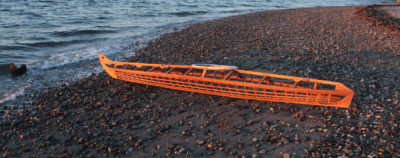
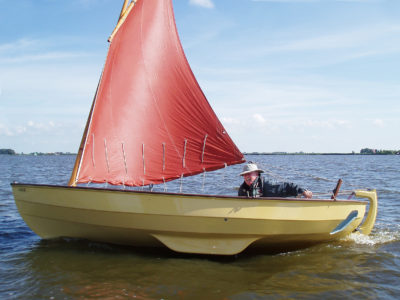
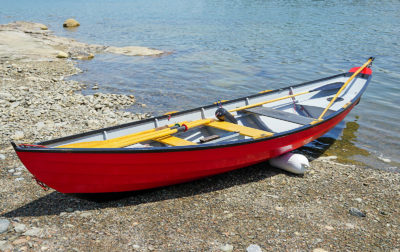
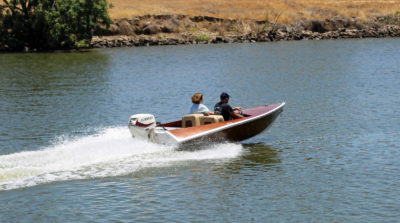
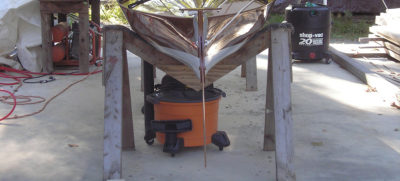
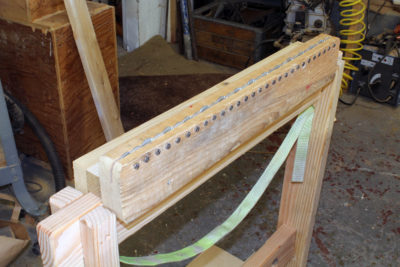
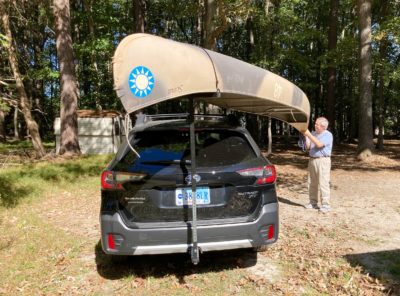
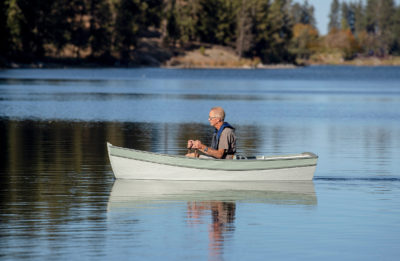

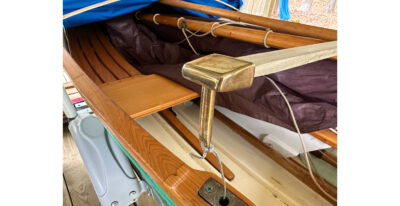
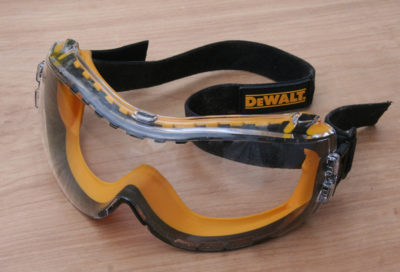
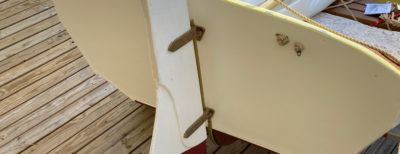
My dad purchased a 14′ Alumicraft and we had something similar to this loader. One person could load the 130 lb. boat easily.
Would there be a way to put a wider cross piece on the loader so that you could use it to load a light, narrow rowboat?
Hi Ben
We had contacted Reese to see if they offered longer cross bars, but they didn’t. You might find a metal shop to make a wider crossbar. Or strap/bolt/glue on a longer piece of wood or metal to the existing bar.
Audrey says “Take pictures!”
Cheers
Clark and Skipper
I just bought one of these from Home Depot website for about $50 and free shipping. It came in two days.
This year I can no longer lift my 83-lb canoe onto my vehicle by myself. I used this loader yesterday evening and it was a piece of cake. I recommend it highly.
How wide is the top bar? I think this may be just the thing to load my clc NE Dory onto the roof of my truck.